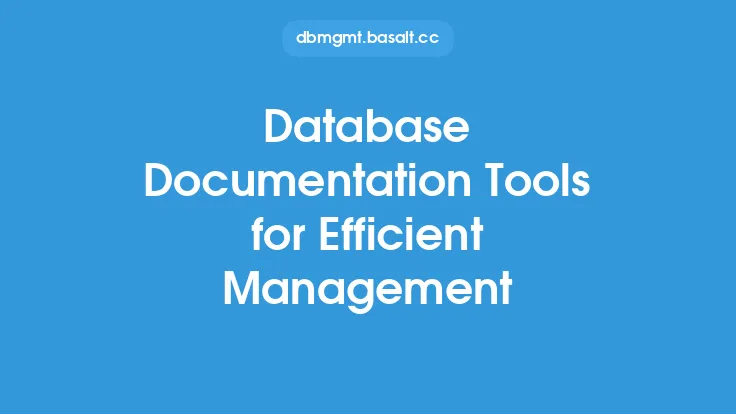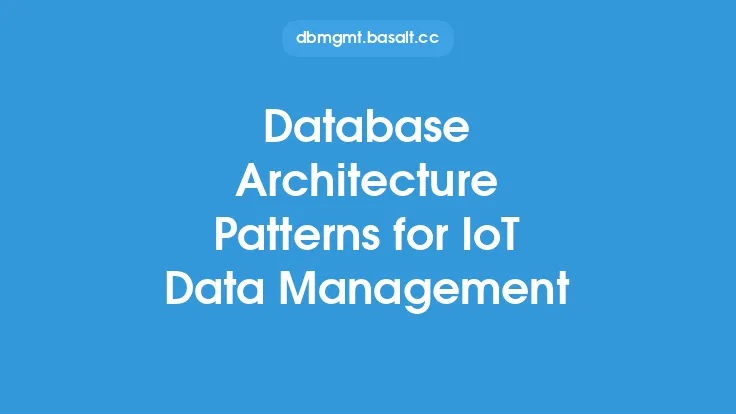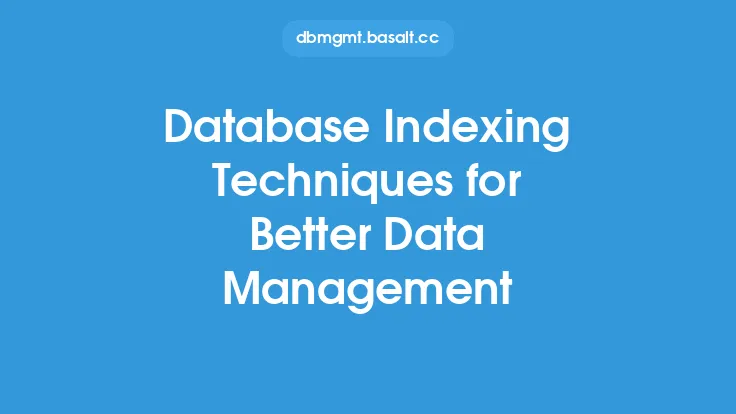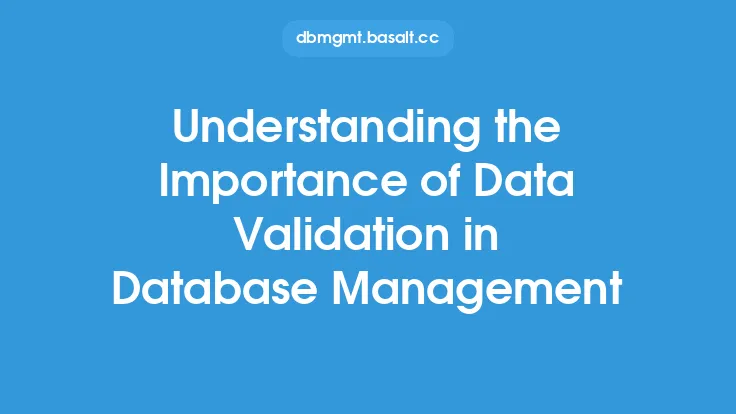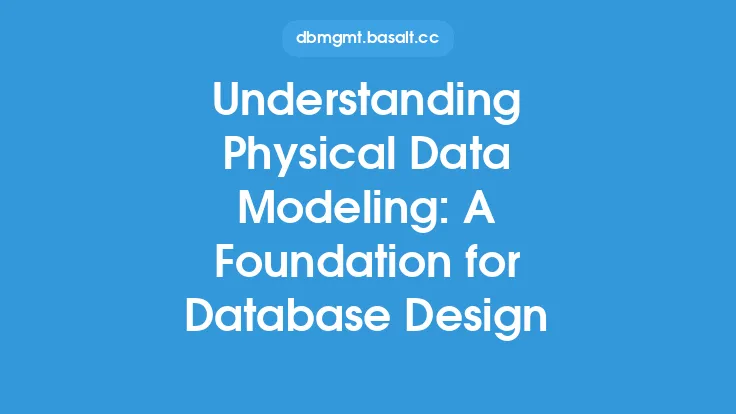Data formatting is a crucial aspect of database management, as it enables efficient storage, retrieval, and manipulation of data. Proper data formatting ensures that data is consistent, accurate, and easily accessible, which is essential for making informed decisions and driving business success. In this article, we will delve into the world of data formatting, exploring its importance, benefits, and best practices for efficient database management.
Introduction to Data Formatting
Data formatting refers to the process of organizing and structuring data in a way that makes it easily readable, understandable, and usable. It involves defining the format and structure of data, including the type of data, its length, and its relationships with other data elements. Data formatting is essential for ensuring data consistency, accuracy, and completeness, which are critical for making informed decisions and driving business success. Well-formatted data also enables efficient data retrieval, manipulation, and analysis, which is essential for business intelligence and decision-making.
Benefits of Data Formatting
Proper data formatting offers numerous benefits, including improved data quality, increased efficiency, and enhanced decision-making. Some of the key benefits of data formatting include:
- Improved data quality: Data formatting ensures that data is consistent, accurate, and complete, which is essential for making informed decisions.
- Increased efficiency: Well-formatted data enables efficient data retrieval, manipulation, and analysis, which saves time and reduces costs.
- Enhanced decision-making: Properly formatted data provides a solid foundation for business intelligence and decision-making, enabling organizations to make informed decisions and drive business success.
- Better data integration: Data formatting enables seamless integration of data from different sources, which is essential for creating a unified view of the organization.
- Improved data security: Data formatting helps to ensure that sensitive data is properly protected and secured, which is essential for maintaining confidentiality and preventing data breaches.
Data Formatting Techniques
There are several data formatting techniques that can be used to ensure efficient database management. Some of the most common techniques include:
- Data normalization: This involves organizing data into tables and defining relationships between them to minimize data redundancy and improve data integrity.
- Data denormalization: This involves intentionally deviating from the principles of data normalization to improve performance and reduce complexity.
- Data transformation: This involves converting data from one format to another to enable compatibility and integration with other systems.
- Data validation: This involves checking data for accuracy and completeness to ensure that it meets the required standards and specifications.
- Data cleansing: This involves identifying and correcting errors, inconsistencies, and inaccuracies in data to improve its quality and reliability.
Data Formatting Standards and Conventions
Data formatting standards and conventions are essential for ensuring consistency and accuracy in data formatting. Some of the most common standards and conventions include:
- ISO 8601: This is an international standard for representing dates and times in a consistent and unambiguous format.
- ASCII: This is a character-encoding standard that defines the format and structure of text data.
- Unicode: This is a character-encoding standard that defines the format and structure of text data and provides support for multiple languages and scripts.
- XML: This is a markup language that defines the format and structure of data and provides support for data exchange and integration.
- JSON: This is a lightweight data interchange format that defines the format and structure of data and provides support for data exchange and integration.
Data Formatting Tools and Technologies
There are several data formatting tools and technologies that can be used to support efficient database management. Some of the most common tools and technologies include:
- Database management systems: These are software systems that enable the creation, maintenance, and manipulation of databases.
- Data integration tools: These are software tools that enable the integration of data from different sources and provide support for data transformation, validation, and cleansing.
- Data quality tools: These are software tools that enable the assessment, improvement, and maintenance of data quality and provide support for data validation, cleansing, and transformation.
- Data governance tools: These are software tools that enable the management and governance of data and provide support for data security, compliance, and risk management.
- Data analytics tools: These are software tools that enable the analysis and interpretation of data and provide support for business intelligence and decision-making.
Best Practices for Data Formatting
There are several best practices for data formatting that can be used to support efficient database management. Some of the most common best practices include:
- Define clear data formatting standards and conventions: This ensures consistency and accuracy in data formatting and enables efficient data retrieval, manipulation, and analysis.
- Use data normalization techniques: This ensures that data is organized into tables and defined relationships between them to minimize data redundancy and improve data integrity.
- Use data validation and cleansing techniques: This ensures that data is accurate, complete, and consistent and meets the required standards and specifications.
- Use data transformation techniques: This enables the conversion of data from one format to another and provides support for data exchange and integration.
- Monitor and maintain data quality: This ensures that data remains accurate, complete, and consistent over time and provides support for business intelligence and decision-making.
Conclusion
Data formatting is a critical aspect of database management, as it enables efficient storage, retrieval, and manipulation of data. Proper data formatting ensures that data is consistent, accurate, and easily accessible, which is essential for making informed decisions and driving business success. By understanding the importance, benefits, and best practices of data formatting, organizations can create a solid foundation for efficient database management and drive business success. Whether you are a database administrator, data analyst, or business user, data formatting is an essential skill that can help you to unlock the full potential of your data and drive business success.

